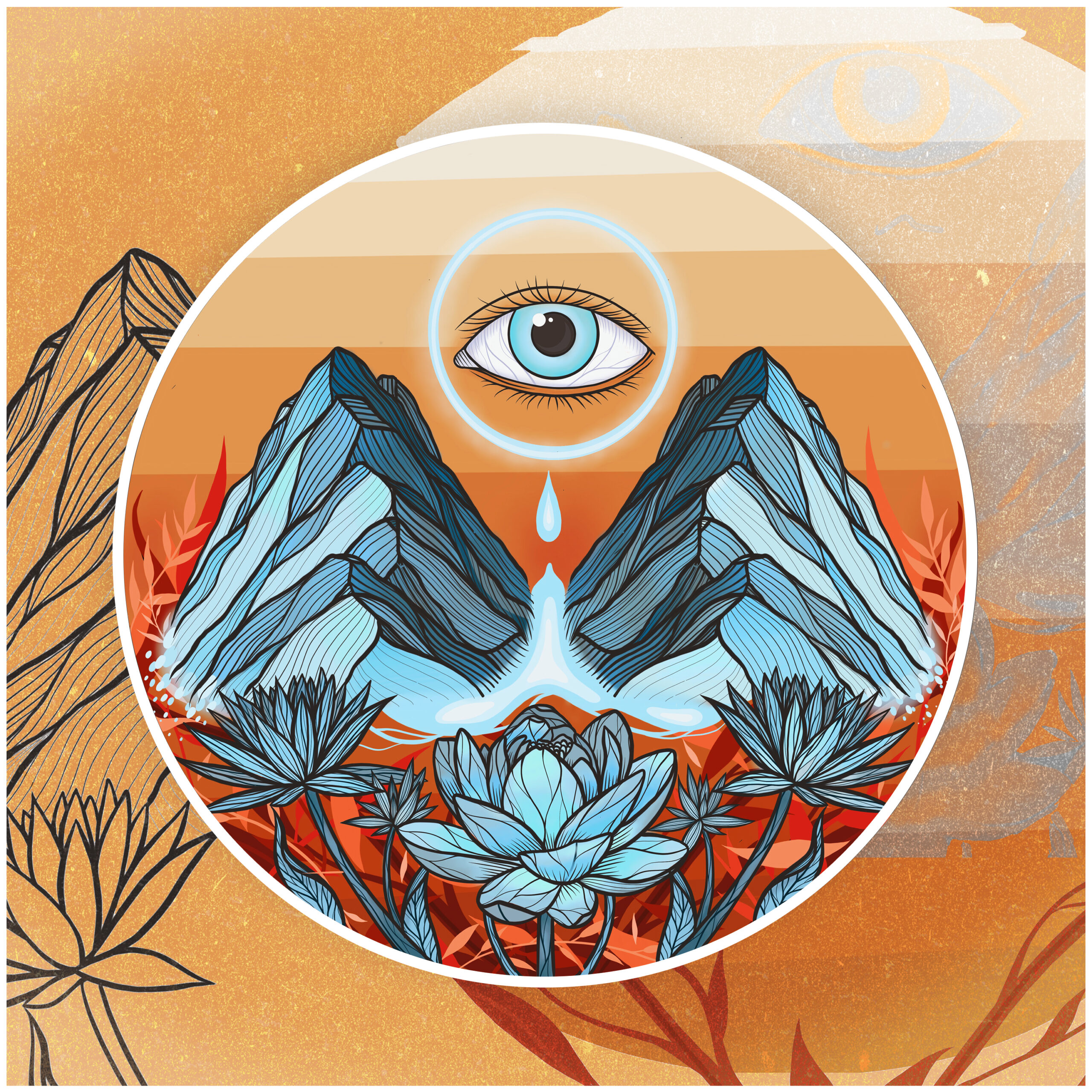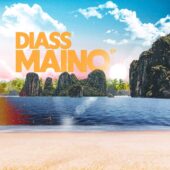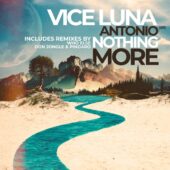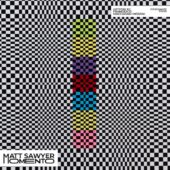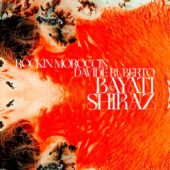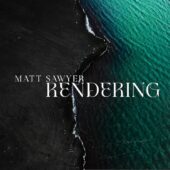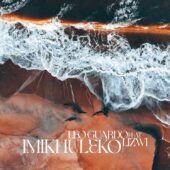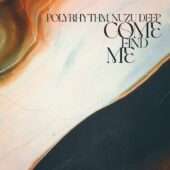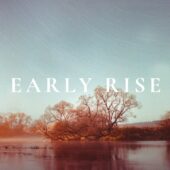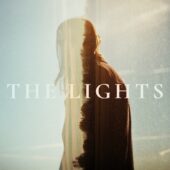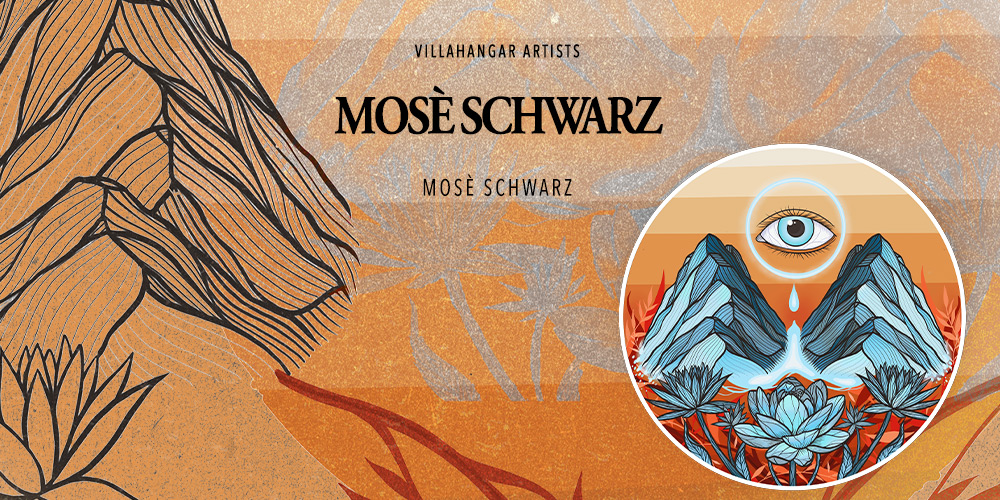
MOSÈ SCHWARZ
Villahangar’s path of artistic collaborations continues, which began with the fourth release of 2021, the track Mbokodo Feat. Tabia by Leo Guardo last July: for the cover of the Remix EP of the track “Golden Hour” by Jessy Greene & The Axiom the label entrusts the creative signature to the artist Mosè Schwarz, painter, designer and illustrator.

Born in Lugano in 1996, raised in the mountains of Mendrisiotto and Luganese, he started with graffiti at the age of 12, influenced by the dense climate of hip-hop that pervaded the Mendrisiotto.
He has thus dedicated himself to the development of lettering, both conceptually on paper and on the wall. During his teenage years, driven by a sense of misunderstanding and frustration, he gave himself to bombing, then illegal graffiti, with different pseudonyms: a period of particularly consistent activity ended with the arrest, miraculously ended without criminal consequences, thanks to socially useful works and personal compensation for the damage caused.

Later he began to wander in the world of illustration. Not having received a classical art education allowed him to create, despite the technical-theoretical limitations, a personal style in which floral motifs, geometric shapes and bones are linked in harmony.
Thus, abandoning the night activities, this allowed him to devote himself to more ambitious legal projects, also devoting himself to study: in 2016 he moved to Lausanne to obtain a degree in literature and linguistics in Italian and English.
Living in a larger urban reality is for him a remarkable change: the spaces of creation, free and more numerous, offer him the possibility of creating a stone’s throw from home, without stress or worries.
But it was the year spent in Zurich between 2019 and 2020 that allowed him to create a network of connections with numerous artists, pushing him in a more mature and conscious direction, guided by a new security. His artistic process is however pursued in the shadow of his studies: at the moment he is following a Master in Media Management at the Faculty of Communication of the University of Lugano.
Returning to a reality he knows has created new opportunities and creative outlets, such as the one with Villahangar, as well as more commissions and time to devote himself to my personal works. In the future, his desire is to create a hybrid working method between analog and digital, and to learn to tattoo in order to translate his style and enrich it through different perspectives.

The world of writing is linked to the musical world of hip hop and rap. Are you too or have you developed your path as a writer regardless of the musical context?
If yes, which artists do you listen to in the genre and is there anyone in particular that you prefer?
My path as a writer began thanks to the massive presence of hip-hop culture in Mendrisiotto, around 2007-2008. In those years that musical genre was the status quo, we had all confronted each other on a generational level. Parallel to the musical context there was a fervent writing scene, from which I was inspired. Over the years, other musical genres have been added, but rap and hip-hop have remained a constant. I explored everything, from the classics to the subgenres, up to the trap declinations of these years. Among my favorite classic rappers are definitely MF Doom, Nas, Mos Def. Among the contemporary ones Joey Bada$$ and Mac Miller.
How did your very first encounter with graffiti take place?
I was lucky enough to have parents who have always supported me, at the age of 12 they bought me a six pack of basic colors of Sabotaz, with which I made the first writings in the old barn of the house where we lived during my childhood.
You talk about venting a sense of misunderstanding and frustration from when you indulged in illegal graffiti. For you was it more a dedication to a protest activity or a way to express your creativity or a mix of the two?
Actually neither (but the second one more): I never wanted to do graffiti to protest against an imaginary system or an alleged status quo. I don’t think there’s a creative side developed enough in a tag to consider it a creative activity. I was more moved by the thrill of walking in the night alone and with cans in my backpack, and by the terrible poetics of the act.
How did you experience the arrest? Meaning, have you experienced it as an injustice or as a non-recognition of something that now in all respects unlike the past is considered art?
I experienced my arrest as a well-deserved punishment for the lightness with which I approached lawlessness, almost as if I could live it sideways, or be above it. My non-organization, impulsiveness and lack of external people to support me were fatal. My approach was completely uncalibrated with respect to the geographical place where I did it, Ticino.

Lausanne and Zurich. Apart from this period of restrictions due to pandemic, do you love to travel? Does the larger metropolis/city in your opinion compared to smaller realities offer a wider creative lymph in terms of atmosphere and inspiration?
I’ve always loved to travel, although maybe I did it less than I would have liked. In recent years I have begun to do it more, it is an activity that opens the mind and destroys many barriers that are created by standing still in one place.
I think that the city and the narrower reality both have strengths and weaknesses. In an urban area it is easier to create contacts and compare yourself with other artists. At the same time, it is an almost endless source of distractions, while in a quieter reality it is easier to find space and time to devote to projects and research. I think a balance between these two realities is the ideal solution.
Network of connections. In your opinion, what is the current situation of the world of artists like you in Lugano/Switzerland and at a general level in the world?
As in every area, the internet has helped to create a saturation of information. This has given more space and visibility to the artists, but also the opportunity for anyone to be inspired, imitated, and try to find their own artistic dimension. Everything has come to light, there are no more secrets and art has been legitimized. Everyone can search for tutorials on Youtube and inspiration on Pinterest, create and repost online. This rewards original and personal styles, and in general I think it has contributed to an increase in the level of quality of the works that are produced. As an artist who wants to continue learning all this is beautiful.
You are therefore also dedicating yourself to more ambitious legal projects, which is how an artist like you can express his art in a legal way. The philosophical difference with clandestine activities is clear. Do you find that it is a right evolution to give artists the opportunity to express themselves and work or do you sometimes regret the aspect outside the rules and full of connotations of protest?
I don’t miss it at all, although on the one hand it will never really leave me. On the road I will
always have markers or stickers with me, in order to leave my name somewhere. However, legal work opens up endless avenues on a creative level, sheltered from a sense of urgency and haste. Working on ambitious projects takes time, and only by working on them legally is it possible to do so. This does not detract from the esteem I feel for those who continue to push their name on wagons or through the city streets, or the pleasure I feel looking at the pieces on the way during a train trip.
Literature and linguistics in Italian and English, the Master in Media Management at the Faculty of Communication of the University of Lugano. How do your studies today complete, as well as on a human level, your artistic side?
My studies complete my artistic path giving it freedom and independence. The two floors, the artistic and the professional, remain separate. Not being obliged to live on art, I can focus on it without obligations or limits, remaining its master. Despite this, studying creates cognitive stimuli that flow into my creative process.
What aspects of lettering development did you focus on paper and wall?
And in your opinion, are there differences in the development and practical implementation on these two different supports?
Personally, I have always had a predilection for the development of lettering on paper, also influenced by the fact that I have always created myself. For me it has always been a personal search and a dialogue with myself.
Between the two mediums there are certainly differences at the technical level and at the level of realization. At the same time, work on paper is the work of study, each piece on a wall has hours spent developing ideas on paper.
The tag for the writer is to leave the mark of their passage. Have you also experienced this phase or have you dedicated yourself more to graffiti?
I had a time when I was obsessed with handstyle, I still think that every good writer can be seen by the way he approaches a tag. In the period when I was more illegally active I preferred tags to graffiti, for gestures and speed of execution.

How did you experience the period of socially useful works you had to do after your arrest?
It wasn’t a terribly long time, so it didn’t weigh me down much. I knew it was a well-deserved (almost lenient) punishment. Of course, the alarm clock at 05:30 to arrive on time was not a cause for joy, but as they say: “a man’s got to do what a man’s got to do”.
In the world of international writing today is there anyone you follow and admire particularly for complexity, skill in care and technical precision in the realization of the pieces? And in the initial New York scene of the 70s?
There are quite a few of them, the internet has created a launch pad and a digital gallery where you can reflect yourself in everyone’s styles. This creates a lot of monotony, but rewards those who know how to stand out. Among the artists I admire the most I would mention Sofles, Askew, Aryz, Etam Cru and Nychos. I’ve never been focused on the past, but I can only respect artists like SEEN and DONDI.
In Italy many famous and recognized tattoo artists come from the world of writing, it is almost a natural path, and it is an activity that you would like to do too.
Have you already begun to take your first steps or is it your desire for the future at the moment?
I already began to take my first steps years ago, then I shelved the idea, and I took it up again recently, this time with renewed interest. I am currently studying as much material as possible and getting a lot of advice from friends who already do it, in order to have a good level the moment I really start.
What do you think you focused on from an artistic point of view for the collaboration with Villahangar?
This is a special opportunity for me, it gives me the opportunity to decline my style in a different way, to undress it and simplify it to make it intersect with the needs of the world of graphics. Beyond that, it gives me the chance to explore digital drawing, with all the avenues it opens up
and the possibilities it contains. Specifically, I focus on simpler and more orderly compositions, composed of a few elements, but above all on the composition of shades and color.

Your illustrative style is made of floral patterns, geometric shapes and bones that bind in harmony. Can you tell the reason for the union of these three elements in particular?
Not having received a “classical” artistic education I am sometimes limited, which has pushed me to experiment with fewer elements and look for a more personal and particular style, within which elements that have a strong meaning for me have slowly converged. Geometry is at the base, called compositional harmony. Flowers narrate my childhood, the places where I grew up and reflect an important part of my personality. While skulls and skeletons act as a warning, forming a dialogue that speaks of transience, flowering and withering.
Today many writers live their artistic expression in full legality, showing their talent with the can and more in the spotlight. Thanks to their creative vision they have landed in communication, design and clothing: the artistic trend of street art influences cinema, video art, advertising techniques and fashion. Many, integrated into the conventional system of the art market, owe their value to previous experiences, often formally illegal. What do you think of this process that has taken place compared to the past and how do you live it personally?
I think it is the natural fulfillment of a historical and social process. After a period of incubation, also made of isolation on the margins, the value of artists who contribute to bringing a new and fresh variant within the art world has been recognized. At the same time, I believe that there are often problems regarding an improper use of this type of art, implemented by brands that have nothing to do with a certain culture. There are the two sides of the coin, on the one hand there are those who finally manage to live through their art, on the other the tendency to use it only for fashion and trend. Personally, I live it in an indirect way, not being obliged to live of my creativity I can live it in a more serene way, without caring so much about how it evolves economically.


